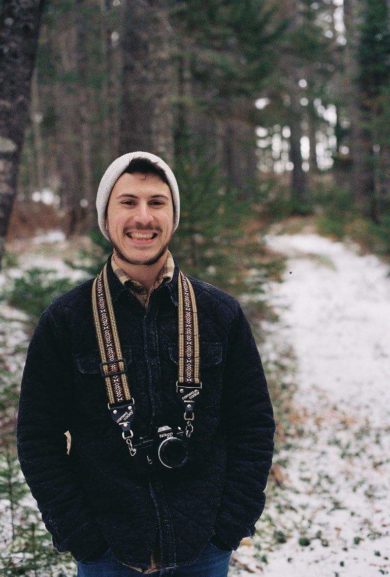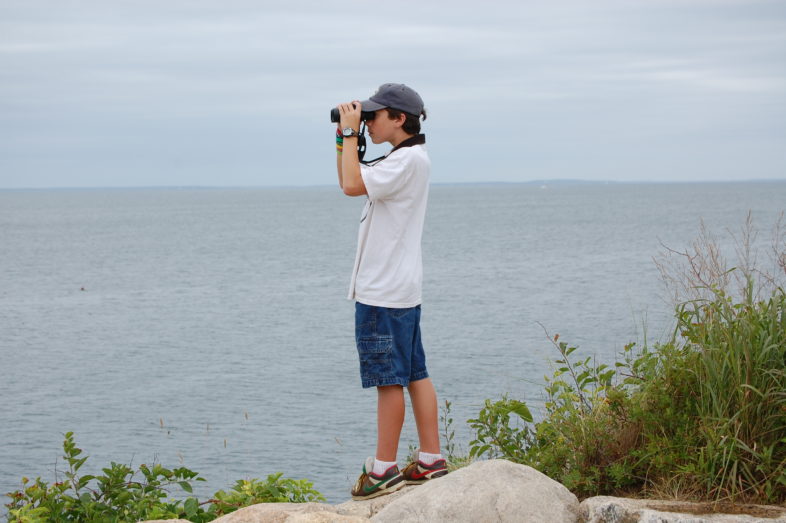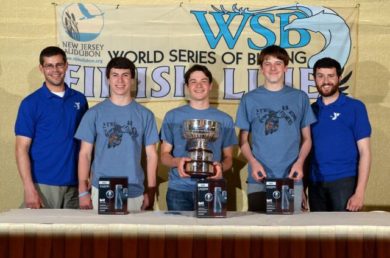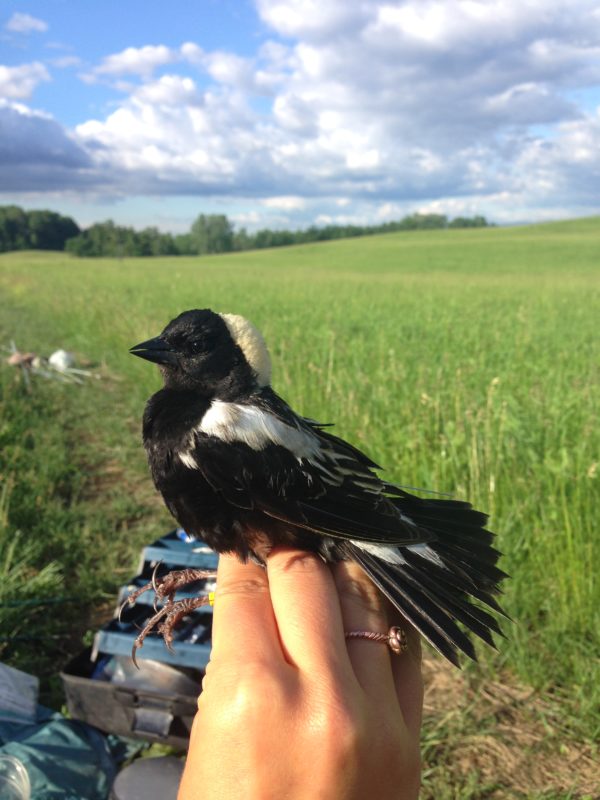By Nathaniel Sharp
Hello Vermont birders, naturalists, and nature enthusiasts! My name is Nathaniel Sharp and I am the incoming Citizen Science Outreach Naturalist at the Vermont Center for Ecostudies. Over the next year, I will be serving in this position through a program called ECO AmeriCorps, a branch of AmeriCorps (think the Peace Corps but in the US instead of abroad) with a focus on environmental careers and opportunities. At VCE, I will be your go-to guy for questions about eBird, iNaturalist, e-Butterfly, and other citizen science tools, as well as any Vermont nature questions you may have. I will also be travelling throughout the state, presenting talks and running workshops about birds, butterflies, and citizen science, and I’m looking forward to leading a few bird walks as well. While birds are my bread and butter, I am also interested in butterflies, dragonflies and damselflies, reptiles and amphibians, trees, and Vermont ecosystems.
Just in case you’d like to know a little more about me and why I love birds and nature, here’s a recap of what I’ve been up to over the years…
I can trace my fascination with birds and the natural world to two moments. The first was when I read Jean Craighead George’s book My Side of the Mountain in 3rd grade. This tale of a young boy living off the land in the Catskill Mountains (a place near and dear to me) with his trained Peregrine Falcon made me want to get outside and explore wild spaces, whether in my own backyard or the mountains of central New York. Around this time in my life, I picked up my first bird field guide, and used it to make sense of the avian paradise that is the Delaware bayshore, a place my family would often visit in summer.
The second was in middle and high school, when I was the youngest member of the Delaware Valley Ornithological Club, one of the oldest birding clubs in the country. Through this club, I was introduced to the Upper Main Line YMCA in Berwyn, PA, where I would spend the next five years competing in New Jersey Audubon’s annual World Series of Birding fundraising event. The Upper Main Line Y’s group of young birders spent weeks leading up to the big day honing our birding skills, and every year in early May I would hop in a van with good friends and spend 24 hours trying to find as many bird species as we could within the state of New Jersey. Teams from the Y went by many names, including Duck, Duck, Duck, Duck, Brant!, Dark Side of the Loon, Bob Merlin and the Railers, and the B.B. Kingfishers, to name a few. The 30th annual World Series of Birding was a rough year, with little migration and few birds to be seen. However, my teammates and I were able to coax a total of 186 species out of the forests, meadows, and marshes of New Jersey, and to our surprise, we became the first team of high school students in the history of the event to best the adult teams and walk away with the coveted Urner Stone Cup.
After graduating high school and leaving my hometown of Wallingford, Pennsylvania, I travelled to the Green Mountain state for the first time to begin my undergraduate studies at the University of Vermont. It didn’t take long to fall in love with Vermont, and my first year as a Wildlife Biology student in the Rubenstein School of Environment and Natural Resources provided me with plenty of opportunities to get out and explore the wildlife and natural communities of the Burlington area and beyond. Throughout my four years at UVM, I participated in Christmas bird counts, birding trips throughout the state and as far as Texas and Florida, vernal pool monitoring and amphibian road crossing surveys, and even gill-netting and trawling surveys on Lake Champlain. I also was lucky enough to assist in teaching my two favorite classes at the university, Ornithology and Birding for Change.
Prior to my final year at UVM, I spent the summer as a field technician with The Bobolink Project in Shelburne, VT. My first job in the field of ornithology had me mist-netting, nest-monitoring, re-sighting, and banding two common grassland bird species—Bobolinks and Savannah Sparrows. Having the opportunity to monitor and band birds allowed me to get to know individual birds and nests throughout Shelburne Farms, and seeing the data recovered from geolocator backpacks attached to some of these birds made me truly appreciate the great lengths they go to in order to raise a successful brood and return to the same fields the following year. Learning about the delicate balance in the Champlain Valley between nesting Bobolinks and farmers’ haying schedules inspired me to write my Honors College thesis on the dispersal response to disturbance of Bobolinks.
After receiving a B.S. With Honors in Wildlife Biology in May of 2018, I went on to spend the summer working for the 2nd Maine Breeding Bird Atlas, a statewide, five-year effort to document the presence and abundance of all breeding bird species in Maine. Conducting pre-sunrise bird point counts meant a few weeks of 3 a.m. wake up calls, but it was all worth it to marvel at the sheer numbers and diversity of birds breeding in the coastal forests of Maine. During my travels throughout remote regions of northern and coastal Maine, I encountered moose, river otters, and pine martens, as well as hundreds of species of nesting birds ranging from Merlins to Ruffed Grouse to Mourning Warblers. It was during my time with the bird atlas that I began developing an interest in butterflies and odonates (dragonflies and damselflies), as these insects would often be emerging just as the birds were going quiet in the midday heat.
While I have long been fond of birds, I have spent the last few years learning all that I can about other taxonomic groups, and am beyond excited to return to beautiful Vermont to continue learning about the wildlife and exploring the wild spaces that this state has to offer. Feel free to reach out to me at with questions you may have, and please pay close attention to VCE’s social media for upcoming events. In the meantime, continue eBirding, eButterflying, and iNaturalisting any and all sightings, and perhaps I’ll see you out in the field!





The Vermont Center for Ecostudies is lucky to have you!
Thanks!
This is great. Enjoy this experience. Kudos to you!
Thank you so much!
A great read, Nathaniel – I’ve learned so much from you!
Thank you Gran!
Welcome to our great state!
Sue Wetmore
Thanks! Excited to explore it further
My Side of the Mountain! My very favorite book when I was a kid, even though it was a gift for my brother. That was about 55 years ago; glad it is still influencing kids to explore nature. Welcome to VCE.
It sure is! I still come back to it every now and then and always learn something new from it.
Congratulations from a fellow Delaware County and Vermont birder Nathaniel! I look forward to seeing you up there sometime. I’m spreading the word to the DelCo birders.
Thanks David! Looking forward to birding with you in VT in the near future.
Wow! My Side of the Mountain was my favorite book as a kid too, and here I am recommending it as a librarian to my students so many years later. I had 26 middle schoolers reading it in our VT Humanities Camp last summer, and I have yet to meet a kid who doesn’t love it! Very cool to know it resonated with both you and Dorothy!
Welcome to your new position, Nathaniel. Your passion for nature is obvious and I’m sure we will all benefit from it!
That’s so great to hear! Glad to hear that it is still a popular book for young kids. Thanks so much for the kind words.
Hey Nathaniel, congrats on your graduation with Honors, and on landing your new job at the Vermont Center for Ecostudies. Sounds like a dream job, doing what you love and actually getting paid for it! Love your “introductory” blog post, and thanks for your kind words about DVOC. And, as you know, I have a special fondness for the subject of “My Side of the Mountain.”
Thank you Art!